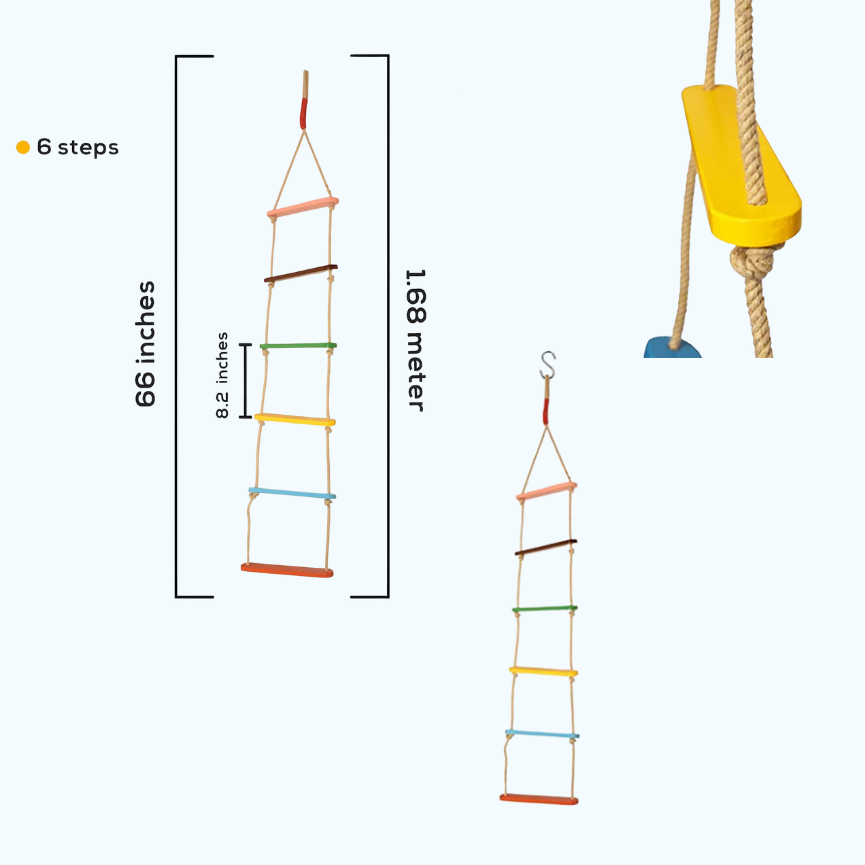
- May 09, 2024
- 157 Views
- 0 Comments
Power Of A 6-Step Ladder For Autism Independence
For individuals with autism spectrum disorder (ASD), achieving independence in daily activities can be a significant milestone. Simple tasks such as reaching high shelves, organizing belongings, or engaging in vocational activities may present challenges. A 6-step ladder offers a practical solution, empowering individuals with autism to overcome height-related obstacles and accomplish tasks with greater ease and safety. In this article, we will explore the ways in which a 6-step ladder can positively impact the lives of individuals with autism, promoting independence, and fostering a sense of achievement.
Access to Heightened Environments
A 6-step ladder provides individuals with autism access to elevated spaces and objects that may otherwise be out of reach. This newfound accessibility opens up opportunities for increased engagement and participation in various activities. Whether it's reaching for books on higher shelves, organizing belongings in cabinets, or assisting with household chores, the ladder serves as a valuable tool for individuals with autism to navigate their environment independently.
Promoting Skill Development
Using a 6-step ladder encourages the development of essential motor skills and coordination. As individuals with autism engage with the ladder, they enhance their balance, spatial awareness, and overall body control. Climbing up and down the ladder requires careful coordination of movements, contributing to the improvement of gross motor skills. These skills can have a positive impact on other areas of life, such as sports activities, vocational tasks, and self-care routines.
Building Confidence and Self-Esteem
Achieving tasks independently can greatly boost an individual's confidence and self-esteem. The use of a 6-step ladder allows individuals with autism to conquer height-related challenges and successfully accomplish tasks that were once difficult or impossible. As they become more proficient in utilizing the ladder, they experience a sense of pride and accomplishment, strengthening their belief in their own abilities. This newfound confidence often translates into increased motivation to tackle other tasks and overcome additional obstacles.
Encouraging Decision-Making and Problem-Solving Skills
Using a 6-step ladder requires individuals with autism to make decisions and problem-solve. They must assess the situation, determine the safest approach, and plan their movements accordingly. These decision-making and problem-solving skills extend beyond ladder use and can be transferred to other aspects of daily life. The ladder becomes a valuable tool for developing cognitive abilities, fostering critical thinking, and enhancing overall decision-making skills.
Enhancing Safety and Risk Management
Safety is a paramount concern for individuals with autism, and the use of a 6-step ladder can help mitigate potential risks. With proper training and guidance, individuals learn how to safely climb and descend the ladder, improving their understanding of balance, weight distribution, and body positioning. As they become more proficient, the ladder becomes a tool for teaching risk management skills, allowing individuals to assess potential hazards and make informed choices about their actions.
Facilitating Vocational Opportunities
For individuals with autism pursuing vocational opportunities, a 6-step ladder can be a valuable asset. Many professions require individuals to work at heights, such as painting, maintenance, or construction. By developing ladder skills, individuals with autism can enhance their employability and contribute to a wider range of job opportunities. The ladder serves as a stepping stone towards vocational independence, enabling individuals to pursue careers that align with their interests and abilities.
The use of a 6-step ladder opens doors to independence, skill development, and increased self-confidence for individuals with autism. By overcoming height-related challenges, they can access new environments, develop essential motor skills, and enhance decision-making abilities. Moreover, the ladder serves as a tool for fostering safety awareness and expanding vocational opportunities. As we strive to create inclusive environments, incorporating a 6-step ladder into the lives



Comments - 0 comments till now